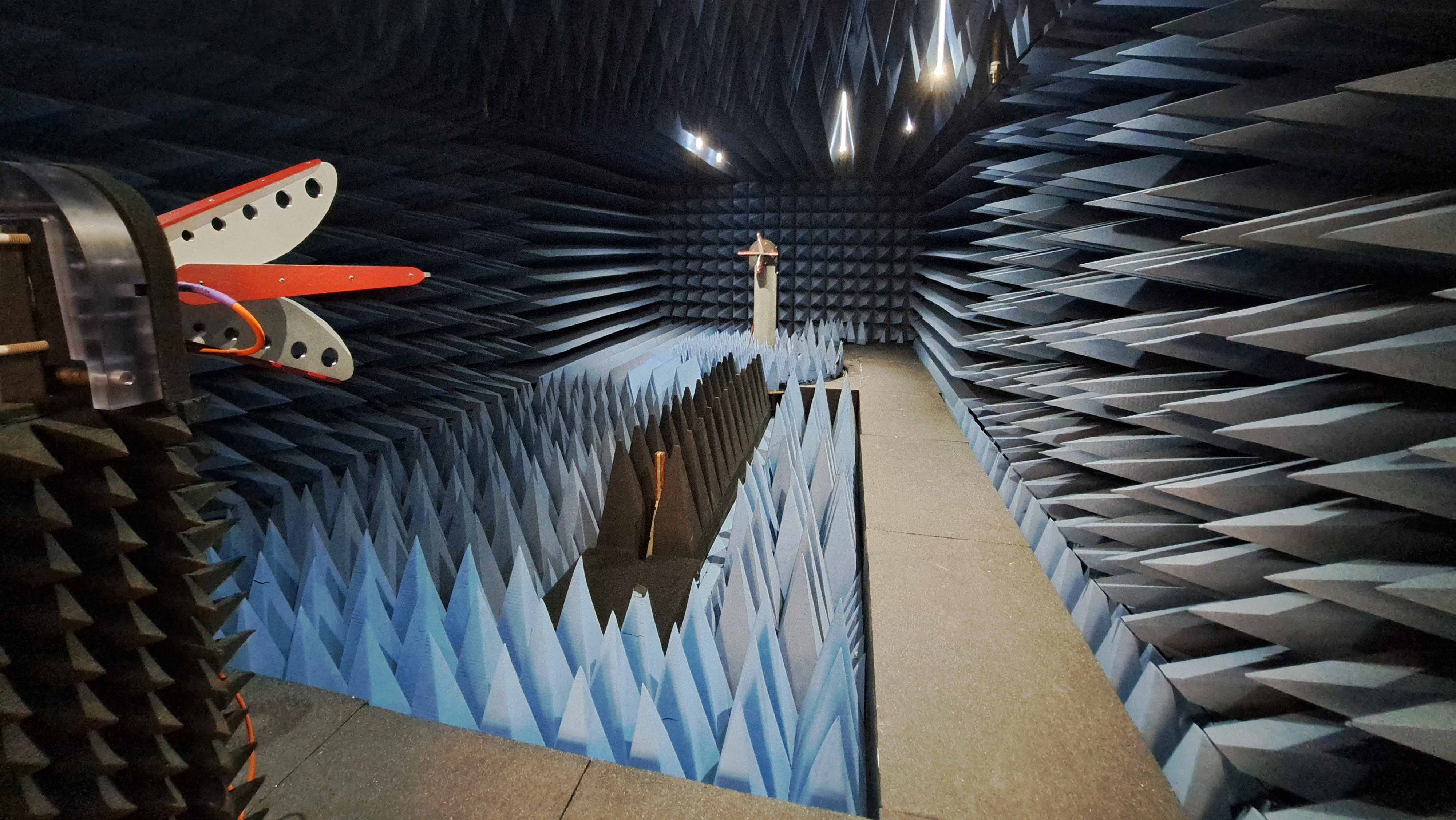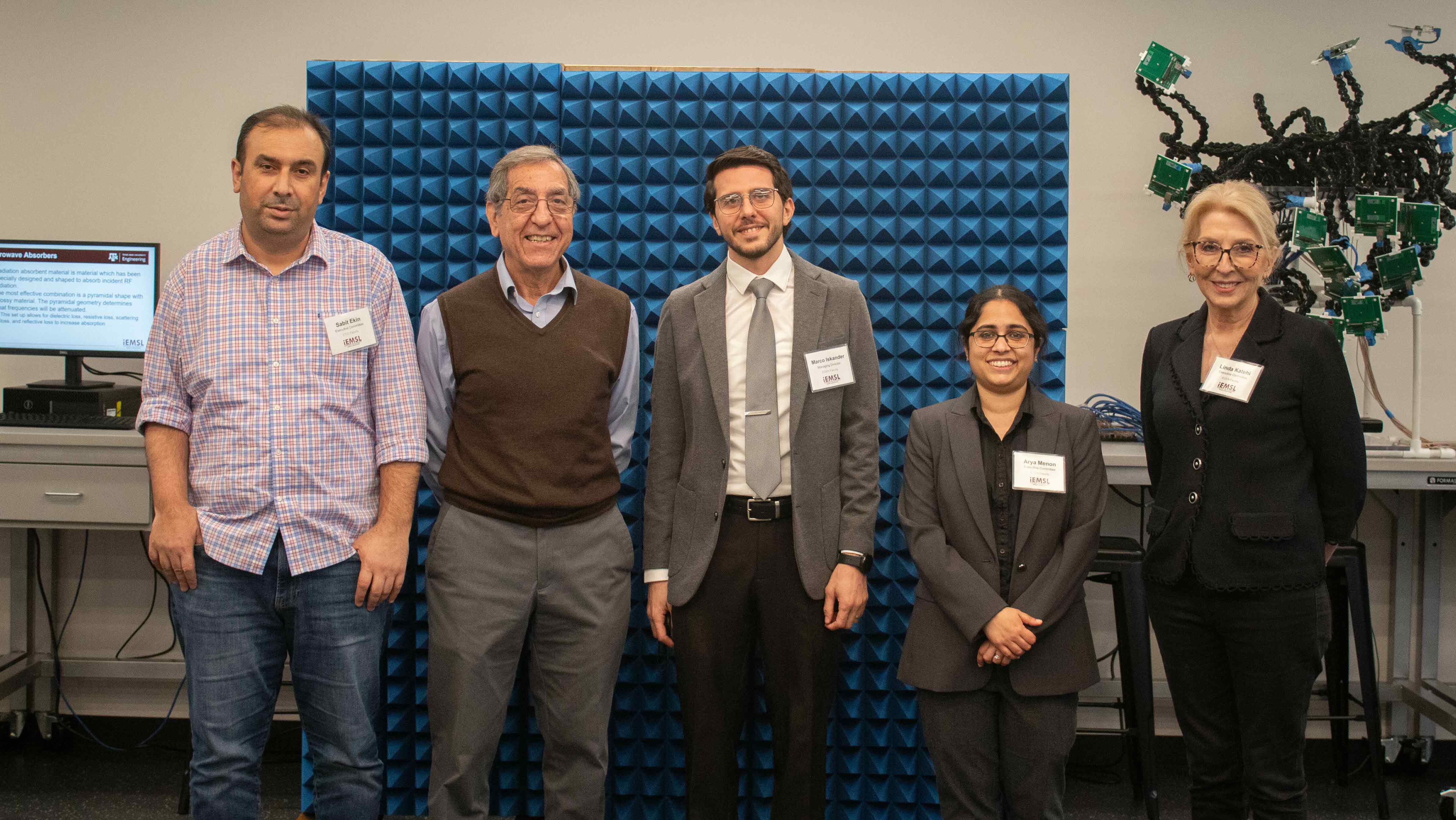
The Department of Electrical and Computer Engineering at Texas A&M University unveiled three renovated Intelligent Electromagnetic Sensor Laboratories (iEMSL) at a spring open house event. The renovations were led by electrical and computer engineering faculty members committed to bringing the almost 50-year-old facilities into the 21st century.
“When Dr. Linda Katehi joined in 2019, she took it upon herself to rebuild the labs,” said Marco Iskander, an electrical and computer engineering instructional assistant professor and the managing director of the facilities.
The iEMSL labs specialize in high-frequency electronics, with a focus on integrating artificial intelligence (AI) into wireless circuits and radars.
“Wireless circuits are in your phones, Wi-Fi routers and Bluetooth systems and all require high-frequency systems,” said Dr. Arya Menon, an electrical and computer engineering assistant professor.
The cross-disciplinary labs are shared spaces for faculty and students. Menon says they are introducing a new structure that improves collaborative research by sharing instruments and equipment rather than working in isolation.
“We hope that this structure, and the renovation itself, facilitates motivation among students in a nice bright lab space,” Menon said. “We want them to feel proud to work in these labs.”
Along with her research team, Katehi, a professor in the Department of Electrical and Computer Engineering and the Department of Materials Science and Engineering, plans to use the labs to explore the integration of AI in high-frequency sensing and communication circuits. An example of Katehi’s work includes automotive radars, which are sensing systems used for driver assistance and safety that use radio waves to detect objects.

Integrating AI can reduce the number of vehicle radars and allow the remaining few to make decisions on their own, potentially saving power. Currently, cars can have up to 12 radars or sensors designed to perform certain functions such as detecting specific directions or objects. Each one utilizes part of the car's power to operate, some just for one purpose.
“We want the sensors to fulfill many functions and instantaneous decisions to be made by the radar itself, which is what we call intelligence,” Katehi said. “By giving circuits intelligence, the power usage, weight and volume can be reduced.”
Equipped with state-of-the-art instrumentation, each newly renovated lab provides researchers opportunities to push the boundaries of science.
“If you want to do cutting-edge research, you need a cutting-edge lab,” said Menon. “And you need the lab to be a space students feel inspired to work in.”
Rapid Prototyping and Machining Lab
Located in room 160, this lab features multiple 3D printers and etchers for rapid antenna prototyping and support structures required for in-lab validation. It also houses an anechoic chamber designed to absorb electromagnetic and sound waves.
Microwave and Millimeter Wave Metrology Lab
Located in rooms 160 and 164, the metrology lab offers personnel probing stations, spectrum and vector network analyzers and signal generators. The lab also provides full communication systems, a digital signal processing test bench and an optical communication test bench.
Instructional Lab
Located in room 167, the teaching lab provides hands-on training in radio frequency measurements. The lab will also be used to train and educate undergraduate students in ECEN 453 Microwave Solid-State Circuits and Systems.
The teaching lab allows students to measure the technology they study. High-end benches, reaching up to four gigahertz in measurements, will be available to use for coursework. Capstone courses ECEN 403 Electrical Design Laboratory I and ECEN 404 Electrical Design Laboratory II will also run through the lab.
Visualization Studio
Located in 167, the visualization lab enables visualization of electromagnetic concepts through high-quality 3D renders. The lab will also be used to educate students, provide workforce training in these emerging technologies and provide exposure to current trends in microelectronics.